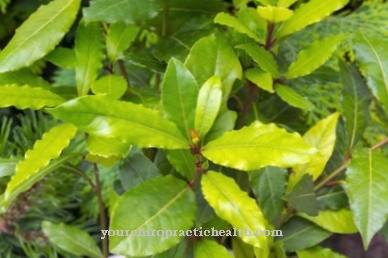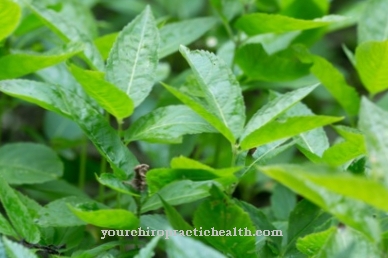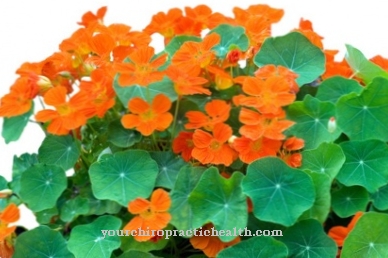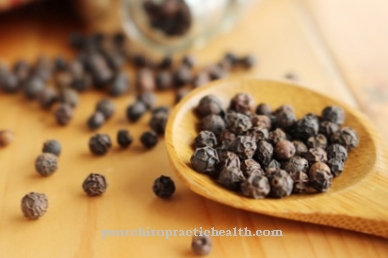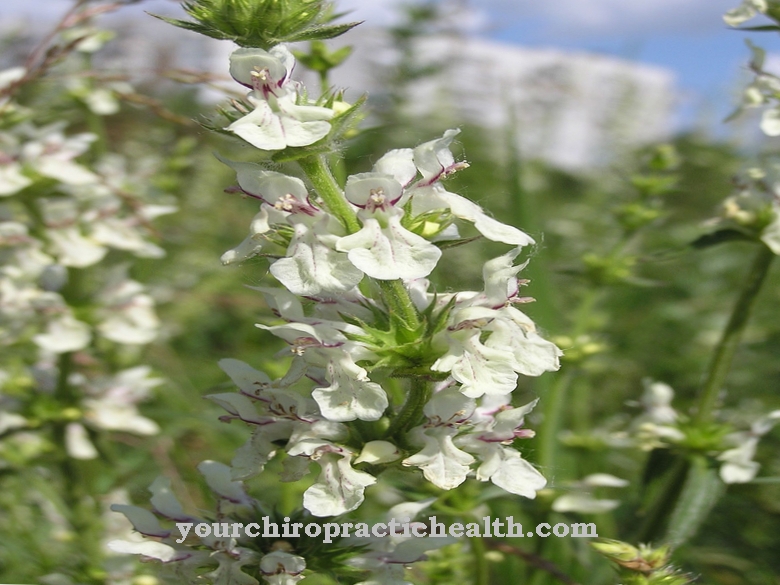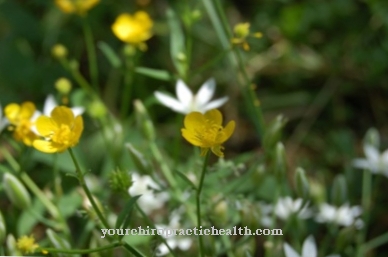The Autumn crocus is a very poisonous plant. It is therefore only advisable to use them in accordance with a doctor's prescription. However, the autumn crocus is the only effective herb against gout diseases.
Occurrence & cultivation of the autumn crocus

The plant sprouts for several years and can withstand harsh winters very well due to its well-developed bulb. In spring, the plant grows elliptically pointed leaves, directly from the bulb. Visually, they are easy to confuse with the leaves of wild garlic or lily of the valley. In autumn, when the leaves can hardly be seen, the autumn crocus blooms.
Now it is confusingly similar to the crocus. The flowering period is between August and November. The flowers themselves are pink to purple in color and have a cup-like shape. Numerous seeds, sealed in a capsule, emerge from this flower by the following summer. The autumn crocus contains the cell poison colchicine as well as other alkaloids, oils, proteins and tannins.
Effect & application
The autumn crocus is highly poisonous and should not be collected, grown or used by yourself. Since it looks very similar to wild garlic, poisoning often occurs in spring. It should only be used in finished preparations or homeopathically.
In folk medicine tinctures from the autumn crocus were mixed and used for gout diseases. However, since the active ingredient content in these tinctures is subject to strong fluctuations, parts of the autumn crocus should not be used in this way. Dangerous poisoning can occur. Finished preparations are usually obtained from the tuber of the autumn crocus.
In the manufacture of these preparations, the standardized production guarantees compliance with limit values. The active ingredient is the poisonous alkaloid colchicine. An undiluted solution from the autumn crocus would only help against gout and the acute pain associated with it. When a gout attack occurs, there are large amounts of white blood cells in the affected tissues.
Their reproduction can inhibit the cell toxin colchicine and thus also has an anti-inflammatory effect. In concrete terms, colchicine is a mitotic poison, which means that it inhibits cell nucleus division in a certain stage of cell reproduction, the mitotic phase. When the cells can no longer divide, the cell dies. However, permanent treatment is not possible with the Herbstzeitlose.
In order to improve gout in the long term, the elevated uric acid levels in the blood must be reduced. For a short time, colchicine can also prevent the phagocytes from absorbing uric acid crystals. The lactic acid excreted in this process increases the acidic environment in the blood and promotes the formation of further uric acid. The poison of the autumn crocus can interrupt this cycle and thus stop the inflammatory process.
The autumn crocus can also be used for neuralgia, rheumatic complaints and certain forms of leukemia and skin cancer. Specific dosage instructions from a specialist are important. Unauthorized dosing can quickly lead to poisoning. In this case, the cytotoxin colchicine paralyzes the capillary vessels and creates a flood of blood with subsequent heavy bleeding.
Further symptoms are nausea, vomiting, severe and mostly bloody diarrhea as well as colic in connection with a strong feeling of thirst. As a result, those affected suffer severe anxiety, attacks of dizziness up to delirium and a collapse of the heart. Serious poisoning usually leads to death.
The cytotoxin of the autumn crocus has only a narrow therapeutic range, so the degree between effectiveness and poisoning is only very narrow. The higher the prescribed dose, the more frequent and more severe the side effects can occur. It can also be the case that if the dosage is too high, the patient only feels the side effects of the poison and the actual effect does not materialize.
Importance for health, treatment & prevention
The autumn crocus is a poisonous plant and at the same time a recognized medicinal plant. It is used successfully in conventional medicine as well as in alternative medicine.
The treatment of gout patients with products from the autumn crocus has a long tradition in medicine. The effects of the plant on gout sufferers were already known in ancient times. However, the Herbstzeitlose was used more as a murder or suicide poison, as its effects set in quickly and strongly.
Seeds, tubers and leaves of the autumn-blooming plant are available for treatment. Products made from the seeds of the autumn crocus are no longer used today because their poisonous content was too high and the risk of poisoning the patient too great. However, finished products are made from the tubers and leaves and prescribed.
The active ingredient is the alkaloid colchicine. Tablets or drops are made from it. With long-term treatment, however, there is still the risk of undesirable side effects. In naturopathy, the Herbstzeitlose is used homeopathically potentiated. Here the poison of the autumn crocus can be very effective. In addition, there is no risk of poisoning when given homeopathically.
The poison is diluted too much. According to the similarity rule, it helps against all health problems that would also be associated with poisoning. These include: vomiting, diarrhea and intestinal inflammation, stomach inflammation, heart problems, head neuralgia, rheumatism and dry cough.
The homeopathic remedy is ideal for treating pregnancy sickness in the first trimester, as it has no side effects. A dose is possible from the D4 potency. A strong hypersensitivity to food odors and a feeling of nausea when looking at food, which often even triggers gagging, speaks in favor of prescribing Colchicum.

